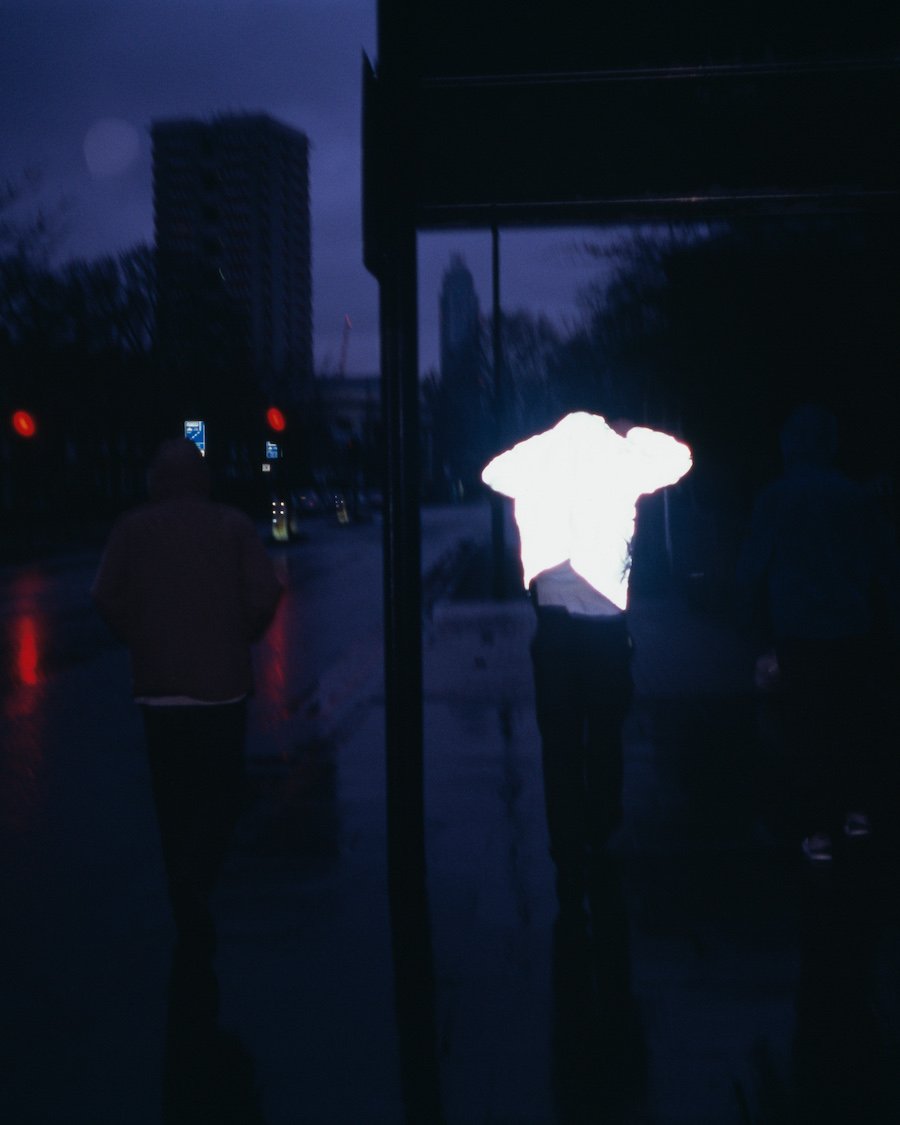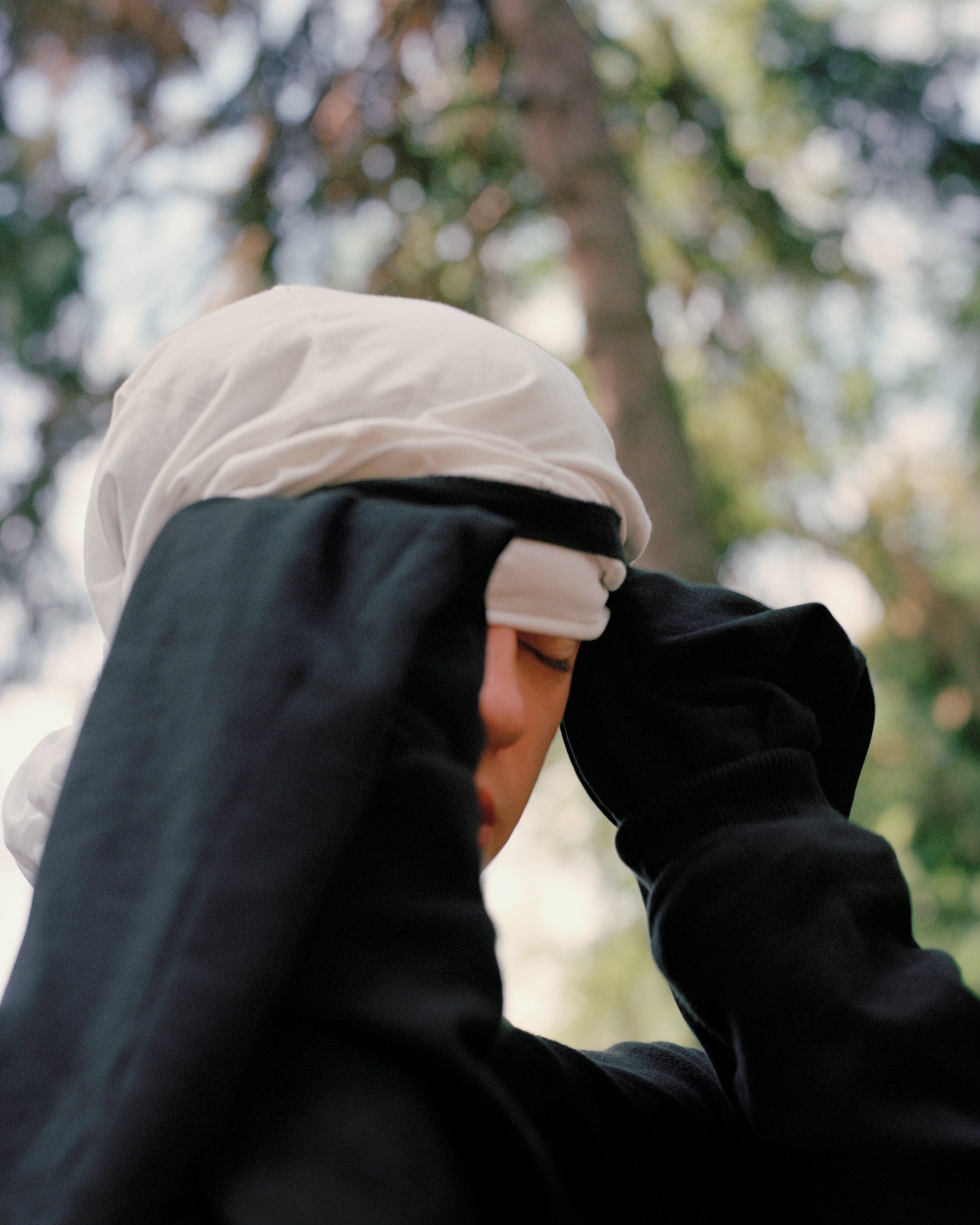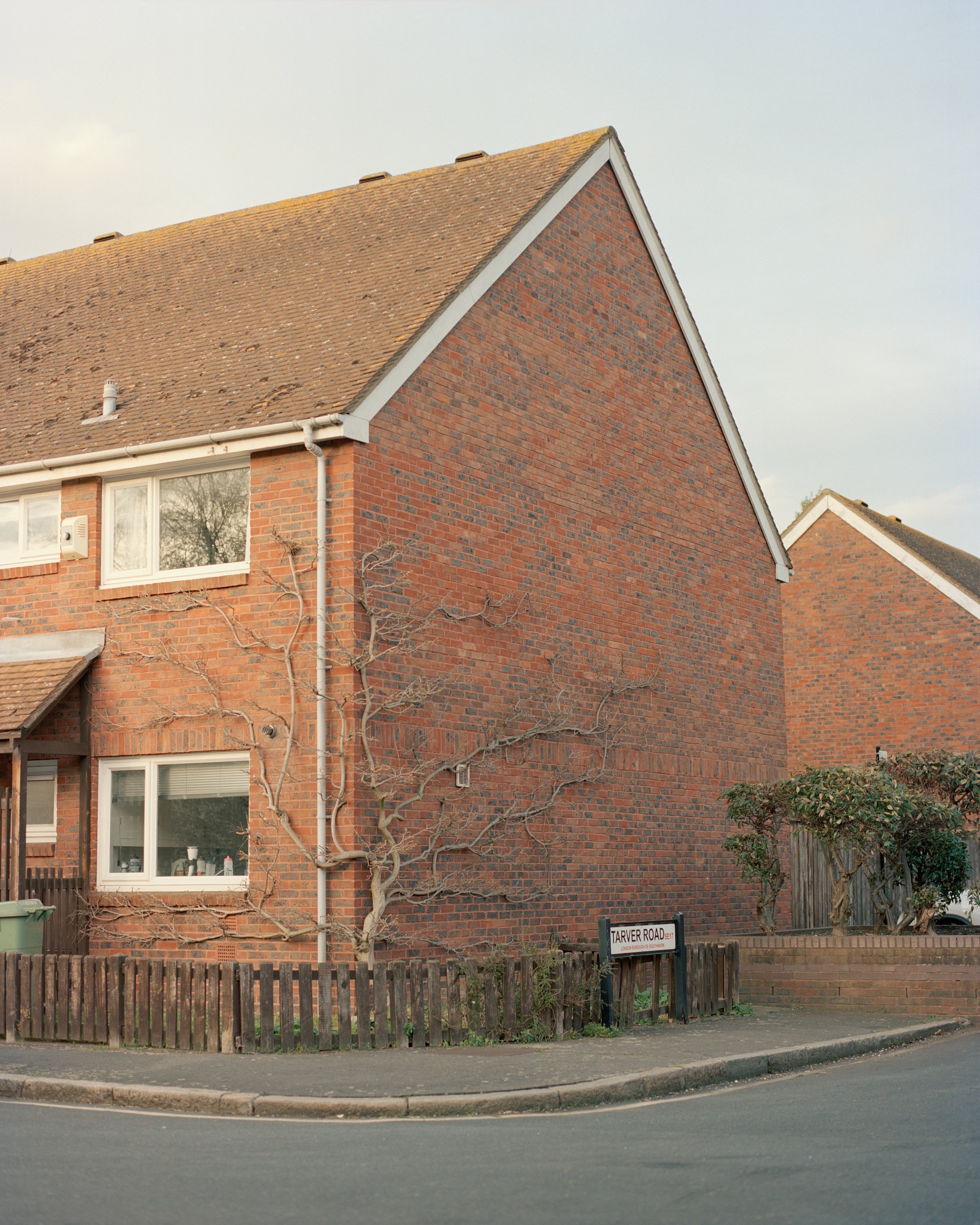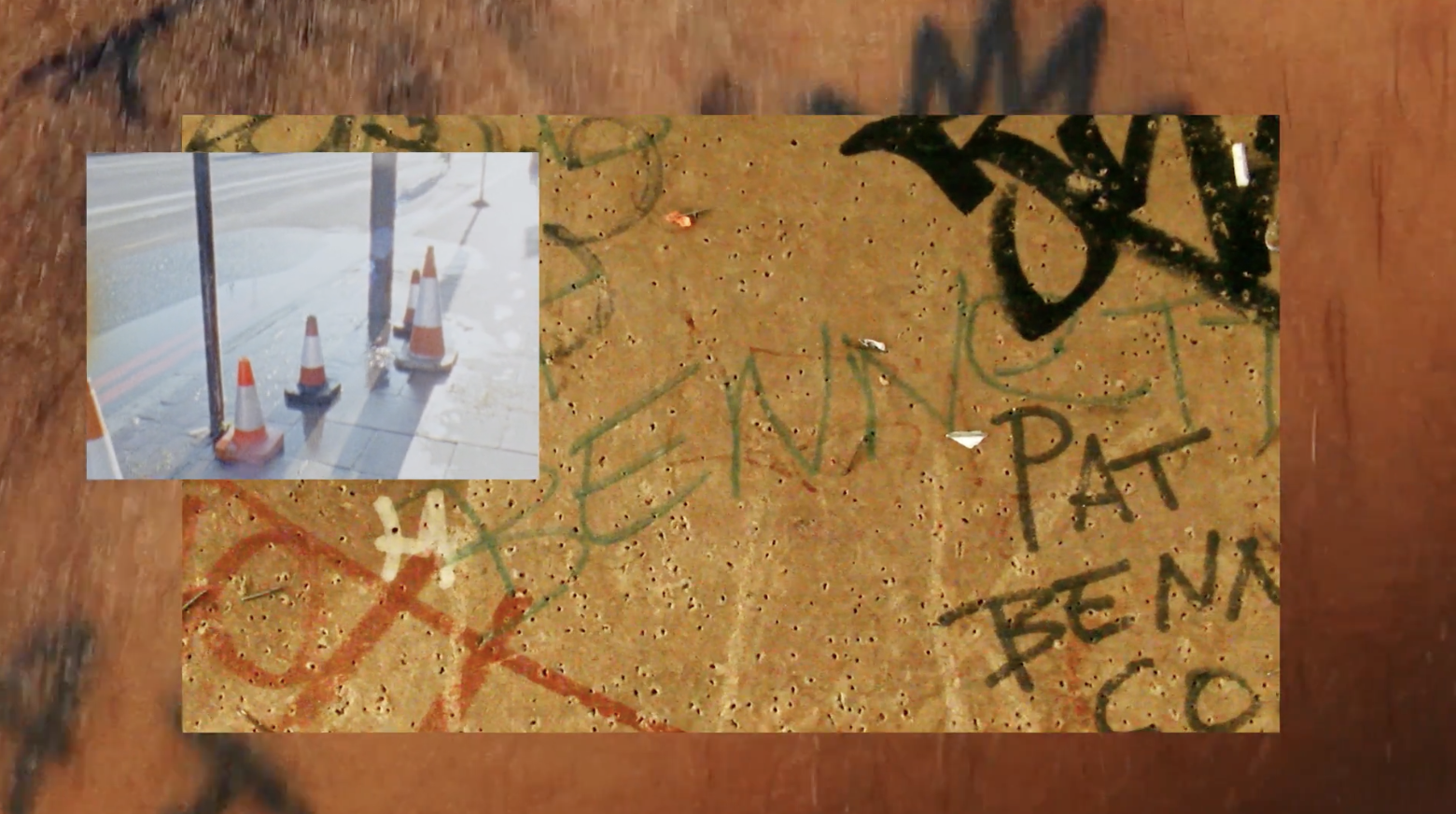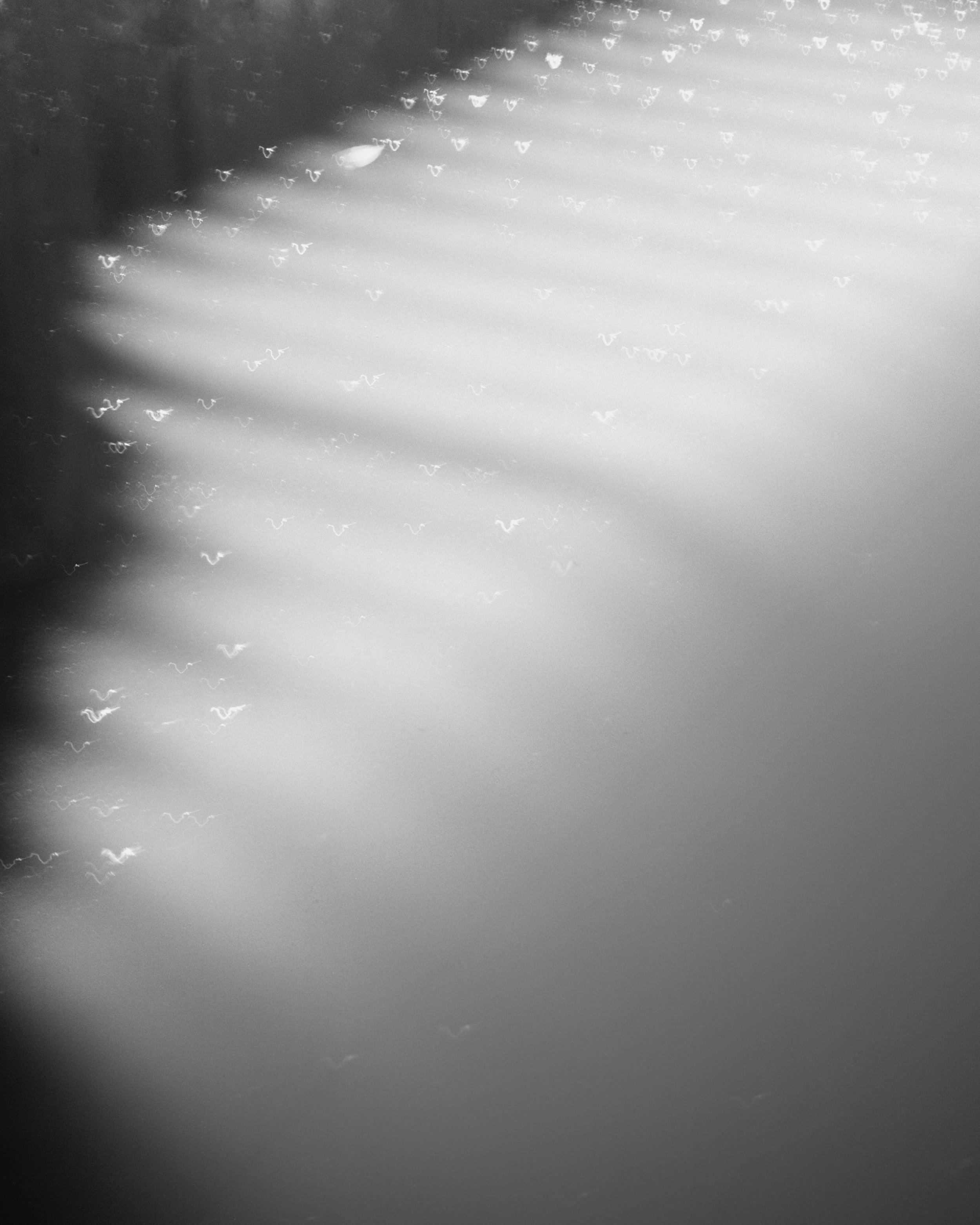interview by Lara Monro
photographs by Lewis Khan
British Photographer and filmmaker, Lewis Khan, uses London as one of his many creative resources. The city has great sentimental importance to the native South Londoner, who has lived on Bonnington Square for most of his life. Tucked away behind the traffic of Vauxhall, the square is one of 300+ housing cooperatives in London, owned and run by its tenants. It has a unique and fascinating history that owes much to the squatters who moved in during the ‘80s as a preventative measure to avoid demolition of the residential buildings. The community set up a whole foods shop and vegetarian café, which is still there to this day.
Unsurprisingly, Khan draws much influence from the solid foundations of his local community. As a result, his interests focus heavily on the study of emotions, relationships and belonging. Working with stills and moving image, his achievements include Theatre, a photo series documenting the realities of medical professionals over a period of four years at the Chelsea & Westminster Hospital and West Middlesex Hospital in London and It’ll Soon Be Nighttime (2021). This filmic work focuses on a long-standing friendship with the 58-year-old George, who Khan met at the age of fifteen.
Khan adopts the collaborative and inclusive mentality of Bonnington Square within his creative practice, which prompts a personal and insightful approach to his work. He spoke with Autre to discuss why he is drawn to photography and film, his recent trip to the States, and why he enjoys finding beauty in the small things.
LARA MONRO: Can you tell me a bit about your creative practice and your journey with it? When did it begin?
LEWIS KHAN: I’m a photographic artist from south London. I work with stills and moving image, and my work is a study of emotion, relationships, and belonging. I’m interested in the experiences that the pursuit of taking pictures opens up, particularly portraits. Taking photos for me is a way of being tactile with the world. I enjoy finding beauty in the overlooked, and using the medium as a means to form connections with people and places.
What do you seek to uncover through your work and what are some of your biggest achievements to date?
There have been some amazing milestones for sure; early on having my graduate work Georgetown exhibited at the Photographers Gallery, having Theatre published as a limited-edition photo book in 2020, being represented by At Trayler. But to be honest, I’m just so grateful that I get to do something I love full time. I realized it the first few shoots back after everything had been off for so long with the pandemic. I’d never taken a moment to pause before then. I guess l was always wrapped up in trying to do this, and that, and the next thing.
MONRO: London is one of your most important creative resources. What is it about the city that you find so intriguing/inspiring?
KHAN: London is home, it’s where I grew up and have always lived. I feel like a product of it and that doesn’t feel like a negative thing. I see it as a foundational place, a base. Familiar and well trodden.
MONRO: Can you tell me about your community in Bonnington Square and what it means to you?
KHAN: Bonnington Square is a deeply special place to me. It’s an ex-squatting, now housing co-operative, community in Vauxhall in South London. It’s where I grew up along with a lot of my closest friends. What’s really amazing is that because of the housing co-operative we’re all still able to live there as adults. Everyone moves houses around the street quite a bit and a lot of our parents still live there. A lot of our generation are there too, and now even some of our generation have kids, so there is the next generation living on the Square. Everyone knows everyone on the street, it’s kind of village life. Eastenders tucked away next to the massive traffic junction in zone 1 London. I feel really lucky to have grown up in that environment, the sense of community, wider family. Growing up here definitely shaped my outlook on things.
MONRO: You have worked with film when documenting your community of friends and family. Your most recent work: It’ll Soon Be Night Time, follows one specific character, George. Can you tell me about him and your relationship?
KHAN: George was someone I met as a teenager, after he moved into a flat on Bonnington Square. It’s a super social street, everyone knows each other, and there always used to be a big bunch of us out skateboarding, playing football in the road, hanging out smoking on the benches, etc. George used to blast music and sing, walk with his radio and flags, so it didn’t take long before he got to know everyone.
As we got more acquainted we would chat in the street, and George would often talk with heart about his past. Certain names and places would come up again and again, and I started noticing those same names written on lamp posts and pavements around the area too. I didn’t really understand George’s story in full, but I felt the emotional weight of what he was telling me.
In 2013, I made a short film entitled Georgetown about him. The process ended up being a way for me to better understand George’s story more substantially. The act of “doing the film” gave license for us both to speak on things more deeply, and reason to spend extended periods of time hanging out. This is a good example of what I meant by the experiences that the pursuit of taking pictures opens up.
Since making Georgetown, George and myself have remained close. We see each other a lot and speak often on the phone. During the various Covid-19 lockdowns and being isolated indoors, we were speaking on the phone a lot, and I started to see a specialness in the ordinary chit chat of the phone calls I hadn’t noticed before. I bought a recording device for my phone and started to record the calls we were having. I liked that the words were now tangible things, not lost to the air. I think because we were all living so isolated from one another, the value in these fairly ordinary exchanges felt increased. I didn’t see George much over that period but heard his voice a lot and started to find our phone call space unique. These recordings then became the motivation and the basis for the video piece It’ll Soon Be Night Time.
screen capture from It’ll Soon Be Night Time by Lewis Khan
MONRO: What have you found most informative about working with film and photography?
KHAN: Probably the number of different experiences, places, people, settings that I’ve had time with through film and photography. It’s a privileged position of getting to live all these different snippets of different ways of life.
MONRO: Why do you think you are drawn to film and photography as your main mediums?
KHAN: I enjoy their foundation in the real world, and how they enable me to have a specific type of interaction with people and my environment.
MONRO: You are currently travelling around New Mexico. Can you tell me about the trip and what you hope to gain from it?
KHAN: Yeah that’s right, I’m out here at the moment. The reasons for coming here were a mixture of things. For the last couple of years I’ve been working on projects where I’m either exploring something personal or I’m working with someone, or a place that is close to me emotionally. This was in part due to the pandemic; that much more isolated life caused me to focus on making work that was more introspective. My practice is largely documentary-based so the work needs to be "of" something. Sometimes with an idea or concept that isn’t immediately so straightforward to represent through documentary photography or video, that figuring out process can be quite lengthy and at times I can get quite bogged down mentally. Having finished those pieces of work I found myself needing a switch up in process, a palette cleanser to cut through some of that previous mental clogginess. I wanted some time to travel, which is something I haven’t done since pre-pandemic, just some focused time to make work in an intuitive way. I’ve always been fascinated by the desert, the plants and the tufts that grow there, the concept of an ‘oasis’ I find interesting. How humans are interacting with that terrain I also find interesting. These points along with my overarching interests in belonging and human experience made me take this trip.
MONRO: What is next for you? Do you have anything in the pipeline, any creative goals?
KHAN: One of the pieces of work mentioned above I’m yet to put out, It’ll Soon Be Night Time. It’s a video piece made of phone recordings between me and George during the pandemic and then video footage mainly of times before that when we were going places and doing things, Vauxhall/ Bonnington Square and people-focused mainly. It’s a very personal piece of work so it’s always interesting to see how that will be received, but I'm really looking forward to giving it an audience.

